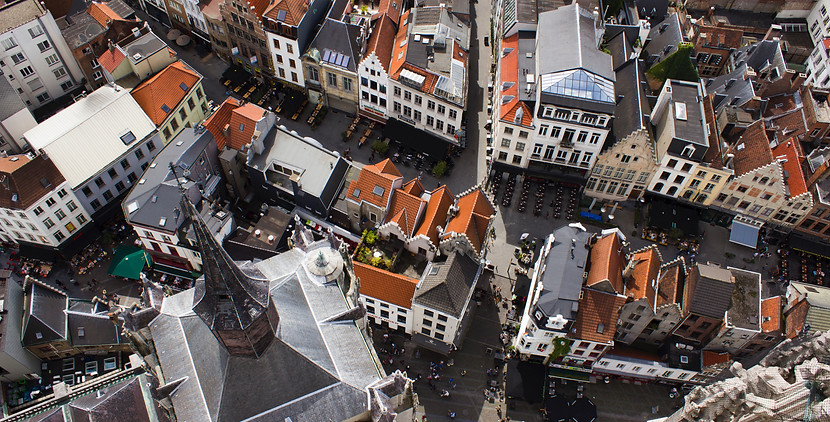Migration Cities


Accra
Accra (Ghana)
Accra, the economic and administrative capital of Ghana, is experiencing rapid informal urbanization mainly due to migration. The 2010 Population and Housing Census indicate that the Greater Accra Region which includes the Accra Metropolis had a total population of 4,010,054, which constitutes 16% of the total population of Ghana. The dominant form of migration is rural-urban, with a variety of secondary rural-rural and urban-urban flows. The primary destination of the majority of internal migrants in Ghana is Accra, which has resulted in up to 40% of the population of the city living in slums. This population growth and sociocultural diversity has triggered many demographic, health, environmental, and socio-economic changes that impact on sustainability and SDGs goals.

Dhaka
Dhaka (Bangladesh)
Dhaka is the capital of Bangladesh. Its population, according to the 2011 Household Census, is 8,906,039.
The metropolitan area, however, houses over 18 million people many of them living in informal settlements. Previous studies show that Dhaka is the most attractive location for all types of migrants.
The Centre for Urban Studies 2005 Census identified 53% of slum residents in the city had migrated from the rural hinterlands and smaller urban districts. Dhaka is also a sending area of Bangladeshi short term contract workers concentrated in the Middle Eastern and South East Asian Countries. The impact of a large flow of migrants in Dhaka is reflected in issues of governance and sustainability associated with the growth of slums, environmental pollution, insufficient public transport, healthcare and education.

Maputo
Maputo (Mozambique)
Maputo is the capital city of Mozambique. It is the geographically smallest and most densely populated province in Mozambique with a population of 1.2 inhabitants over a land area of 347 km2. The city population continues to grow at a rapid rate as a result of the high birth rate and immigration, posing enormous challenges to the local government in its efforts to deliver basic services, provide food, and improve the city’s infrastructure.
The nature of migration in Maputo is complex compared to major European cities that have developed from transfer resources resulting from a long term history of agricultural development. In contrast, Maputo, like many African cities, has grown rapidly as a result of migration flows from rural areas associated with political instability, war, poverty or unsuccessful agricultural policies. Pull factors to the city include job security, aid, frontline services, and economic opportunities in both informal and formal sectors.

Amsterdam
Amsterdam (Netherlands)
Amsterdam is the capital of the Netherlands. Its metropolitan area population has over 1.3 million inhabitants, many of which are migrants. In Zelinski’s Mobility Transition model, the city would be classified in Stage 4 due to its complex migration systems and circulatory movements. The city is a major destination for migrants.
Large and established diasporas from Turkey, Morocco, Suriname, the Antilles, and Sub - Saharan countries, including Ghana, bring a sense of cultural diversity to the city. International migrants have to make adjustments to a new cultural setting, which brings challenges and opportunities for sustainability. Being an advanced
society according to Zelinski’s Mobility Transition model means that multidirectional circulatory movements towards Amsterdam, and within the city, require careful investigation of potential impacts to sustainability and SDGs goals.

Brussels
Brussels (Belgium)
Brussels is the capital of Belgium. The Brussels - Capital Region, which includes the city of Brussels, is located in the central portion of the country and is a part of both the French Community of Belgium and the Flemish Community. Brussels is the most densely populated and the richest region in Belgium in terms of GDP per capita. It covers 161 k m2, a relatively small area compared to the two other regions, and has a population of 1.2 million. The metropolitan area of Brussels counts over 2.1 million people, which makes it the largest in Belgium. Brussels is an established destination for international migrants. In 2015, 33% of the inhabitants of Brussels were of foreign nationality. Furthermore, the Brussels – Capital Region constitutes the main gateway for international migration, as approximately 11% of its active population are recent immigrants who have arrived less than five years ago. This ongoing migrant inflow reveals how complex the challenge of immigration is in Brussels, in particular with regard to the integration of new populations in the host society. One of these challenges is associated with integration programmes in the region as these include one from the Dutch-speaking community and the other from the French-speaking community.

Worcester
Worcester (The United States of America)
Worcester is a city in the state of Massachusetts. Between 2007 and 2012, Worcester welcomed 2,196 refugees. Refugees who arrived in Worcester during this period make up 1.2 % of Worcester’s current population but represent 26% of all refugees arriving in Massachusetts during that time. The refugees who arrived in Worcester in that period came from various distinct cultural backgrounds. Although Worcester is home to a large number of refugees, they can easily be overlooked due to the overall size of the foreign-born population. 37,498 foreign-born individuals live in Worcester. This group constitutes over 20% of the total population of the city. The vast presence of refugees as well as international migrants promotes elements of social transformation and demographic metabolism that impact sustainability.
